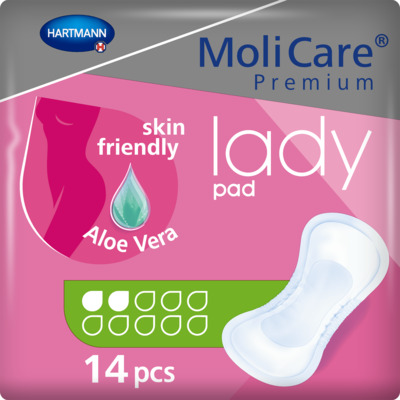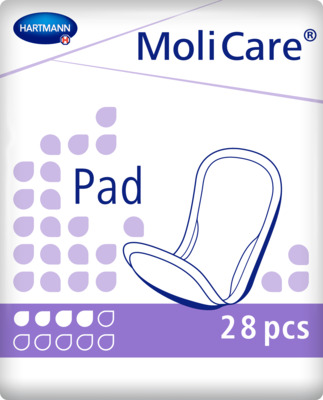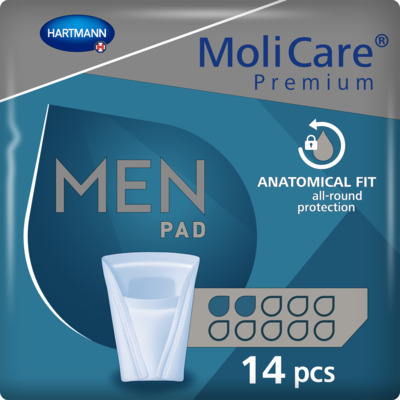Incontinence Advice
Regaining Bladder Control After Surgery: Steps to Recovery
Regain control, regain confidence. Understanding and managing bladder control is pivotal to your recovery and well-being. Postoperative urinary incontinence (POUI) is the involuntary leakage of urine following a surgical procedure. Although the condition is often temporary, it can persist and require ongoing management. This type of incontinence often occurs after surgical procedures involving the pelvic region, such as surgeries for prostate cancer, hysterectomies, or bladder surgeries. The condition can be distressing for many and significantly impacts quality of life. In this article, you will learn about: Key points: The common causes and symptoms of postoperative urinary incontinence. How to navigate this common but challenging condition. The practical tips for managing incontinence – including fluid intake and bladder training. The benefits of lifestyle changes, such as quitting smoking and maintaining a healthy weight. How to gain professional advice tailored to your needs.

Common causes of POUI
The causes of POUI largely depend on the type of surgery performed and the individual’s preoperative condition. Several factors can affect the bladder's control mechanisms, such as:
Nerve damage: Surgical procedures involving the pelvic area can inadvertently harm the nerves that control bladder function.
Pelvic floor muscle weakness: The muscles supporting the bladder may weaken due to the strain or trauma of the surgery.
Medications: Certain drugs used during and after surgery, including diuretics and sedatives, may exacerbate bladder control issues. The effects of anaesthesia, particularly spinal or epidural anaesthesia, can temporarily impair nerve function, leading to incontinence. While this effect is usually temporary, in some cases, it may persist.
Urinary tract complications: Post-surgery infections or inflammation can result in an irritated and sensitive bladder (UTIs), potentially leading to a temporary loss of bladder control. If bladder control was an issue before the surgery, these symptoms may be further aggravated.
Physical obstructions: Issues like constipation post-surgery can press against the bladder, leading to involuntary leakage.
Catheters: Catheters are commonly used to manage urine output during surgery as people cannot control their bladder while under general anaesthesia. The catheter remains in place until the person is awake and alert enough to manage their own urine output again. The introduction of any foreign body into the urinary system can cause irritation and may temporarily affect bladder control afterwards.
Common symptoms
The main symptom of postoperative incontinence is the uncontrolled leakage of urine, which can vary in severity. Some may experience occasional dribbling, while others might face more frequent and significant leakage. This condition can lead to skin irritation, infections, and social embarrassment, making it essential to seek treatment.
Early recognition of all bladder issues can lead to more effective management. Many of the following signs and symptoms can also correlate with POUI:
Increased frequency and urgency: Needing to urinate more than usual or experiencing sudden, intense urges.
Involuntary leakage: Occurring during physical activities or unexpectedly.
Nocturia: Frequent urination at night that disrupts sleep.
Physical discomfort: Pressure or spasms in the pelvic area can indicate underlying health issues.
Bladder Control After Surgery
- Sources
- Common causes of POUI
- Bladder Control - Who May Be Affected?
- How common is incontinence?
- Managing bladder control after surgery
- Lifestyle and behavioural treatments
- Medical options
- Skin care
- Accessing support
- Diagnostic tests for bladder control
- Impact of hysterectomies on bladder control
- FAQs
Bladder Control - Who May Be Affected?
Bladder issues post-surgery can manifest in various forms, deeply affecting an individual’s lifestyle:
Stress incontinence: Triggered by pressure on the bladder from physical exertion or sudden movements.
Urge incontinence: This occurs when one cannot reach the bathroom in time, often noted in those with chronic conditions like MS or Parkinson’s.
Overflow incontinence: Characterised by the bladder’s inability to empty completely, leading to constant dribbling.
Functional incontinence: Mobility or cognitive impairments can delay access to the bathroom, resulting in accidents.
Who may be affected?
Bladder control issues do not discriminate, potentially impacting individuals across various demographics. They are not always provoked by surgery, though, and can happen before or after surgery. However, certain groups are more susceptible to bladder control problems:
Gender: Women and individuals assigned female at birth (AFAB) are particularly prone due to factors such as pregnancy, childbirth, and menopause, which can weaken pelvic muscles.
Senior adults: Those over 50, regardless of gender, often experience a natural decline in bladder muscle strength.
Obesity: An increased body weight can exert extra pressure on the bladder.
Pre-existing conditions: Individuals with prior bladder or pelvic floor issues may be more susceptible.

How common is incontinence?
Bladder control problems are significantly more common among women and those who were assigned female at birth (AFAB), due to factors such as pregnancy, childbirth and hormonal changes.
Approximately 30% of women and AFAB individuals over 50 experience incontinence, compared to about 15% of men and those assigned male at birth (AMAB) in the same age group.
The impact on daily life
Bladder control issues can profoundly affect quality of life, leading to embarrassment, stress, and social anxiety. The psychological impact can be as significant as the physical symptoms, making it crucial for those affected to seek help and not suffer in silence.
Causes of poor bladder control
Various factors contribute to bladder control problems, ranging from physiological changes to lifestyle choices:
Health changes: Aging, diabetes, and urinary tract obstructions can impair bladder function.
Neurological conditions: Diseases like Alzheimer’s, multiple sclerosis, and Parkinson’s can disrupt nerve signals necessary for bladder control.
Lifestyle factors: Consumption of caffeine, alcohol, and certain medications can aggravate the bladder. Similarly, a sedentary lifestyle may also contribute to the pelvic muscles weakening.

Managing bladder control after surgery
If any loss of bladder control symptoms persists after surgery, it is important to discuss with your surgical team at the hospital or your GP to receive specialist advice tailored to your needs. There are many treatment options to improve bladder control, ranging from simple lifestyle adjustments to specialised support at a continence clinic. There, you may be advised on treatments such as pelvic floor exercises and bladder training techniques, which can significantly improve your condition.

Lifestyle and behavioural treatments
Simple adjustments in daily habits can significantly influence the management of bladder symptoms:
Diet: Reducing the intake of irritants like caffeine, alcohol, and carbonated drinks while increasing the consumption of water and herbal teas can soothe bladder irritation.
Bladder training: Gradually extending the time between bathroom visits can condition the bladder to hold urine longer, reducing urgency and frequency.
Pelvic floor exercises: Regularly performing Kegel exercises can help to strengthen the pelvic muscles, supporting better bladder control.
Absorbent products: Pads and liners can provide short-term relief by absorbing leaks, though they must be changed regularly to prevent odour and skin irritation.
Medical options
When lifestyle changes are insufficient, medical treatments may be recommended, such as necessary:
Medications: Various medications can be used to treat incontinence, depending on its underlying cause. For example, anticholinergics and beta-3 agonists can relax the muscles surrounding the bladder, which reduces the frequency of urination and the easing symptoms of urgency and incontinence.
Botox: Botulinum toxin type A injections can be used to decrease bladder muscle contractions, providing relief from the symptoms of urge incontinence and an overactive bladder.
Surgery: When other treatments are ineffective or unsuitable, surgical procedures may be recommended. These can include repairing or lifting the bladder. For severe cases, procedures like sacral nerve stimulation following a prolapse, augmentation cystoplasty, or it may be necessary to create a urinary diversion.
Skin care
Proper skin care is crucial when managing incontinence. Incontinence can cause skin irritation and breakdown, making it essential to change products as soon as they become wet. Utilise MoliCare skin barrier creams to shield the skin from urine. Regularly applying these products can prevent irritation and ensure skin health.
Accessing support
For those who need urgent bathroom access while out, consider carrying a Just Can’t Wait card. Additionally, obtaining a RADAR key allows access to locked public toilets around the UK, ensuring availability when needed most.
Diagnostic tests for bladder control
Accurate diagnosis is key to effective treatment. Healthcare providers may utilise several tests:
Urinalysis and kidney function tests: These tests assess overall kidney function and check for signs of disease that might affect bladder control.
Post-void residual (PVR) test: Measures the amount of urine remaining in the bladder after urination.
Urine culture: Identifies any infections that could be contributing to bladder control problems.
Urodynamic testing: Evaluates the bladder’s ability to hold and release urine effectively.
Bladder diary: Monitoring fluid intake and urination frequency helps identify patterns that may suggest underlying issues.
Impact of hysterectomies on bladder control
Hysterectomies, one of the most common surgeries among women, involve the removal of the uterus and sometimes other reproductive organs, which can significantly impact pelvic floor muscles and, consequently, bladder control:
Types:
Total hysterectomy involves removing the entire uterus including the cervix.
Supracervical hysterectomy leaves the cervix in place.
Radical hysterectomy, used primarily for cancer treatment, removes the uterus, cervix, and surrounding tissues.
Reasons for surgery: Conditions like endometriosis, uterine fibroids, and cancer may require a hysterectomy. These conditions not only affect overall health but also impact bladder control, especially after surgery.
How HARTMANN Direct and MoliCare® incontinence products can help
Don’t hesitate to reach out to us and see how our incontinence pads or protective underwear, which are designed to absorb leaks and provide security and comfort discreetly, can help you to control your bladder. Additionally, our incontinence bed sheets can protect bedding and reduce laundry frequency if you are worried about leakages at night.
In conclusion, postoperative incontinence is often a temporary condition, but managing the loss of bladder control can be a stressful time. It is important to gain advice and support from healthcare professionals who can advise on the most effective way to manage your symptoms and recommend treatments if symptoms persist. Lifestyle adjustments to maintain overall bladder health can help to improve your chances of regaining control over your bladder faster. Remember, you are not alone; medical professionals, support groups, and continence products are available to help you manage your symptoms effectively.
Further reading:
For information about changes in diet, especially for those over 50, try our guides on bladder cleansing foods, foods and drinks that irritate the bladder and bowels, as well as bladder-friendly drinks. You can even consult your healthcare professional about switching up your diet for better bladder control.
Unfortunately, a common side effect of having cancer is losing control of the bladder - see our advice page on how you can handle incontinence after cancer.
Find out how changes in a woman’s lifecycle, e.g., pregnancy, childbirth, or menopause, can aggravate bladder control issues and cause incontinence.
Anxiety is commonly tied with losing bladder control - understand how anxiety affects your bladder and bowels, and can lead to stress indigestion symptoms.
FAQs
Why can't I hold my pee all of a sudden?
Sudden difficulty in holding urine can be due to various reasons including recent surgery, urinary tract infections, bladder irritations, medication side effects, or neurological conditions affecting bladder control.
How long does urinary incontinence last after surgery?
The duration of urinary incontinence after surgery can vary depending on the type of surgery, the individual’s health and the effectiveness of post-surgery rehabilitation.
How do you regain bladder control after surgery?
Regaining bladder control after surgery can involve pelvic floor exercises, bladder training techniques, maintaining a healthy weight, avoiding bladder irritants like caffeine and alcohol, and gaining advice from a healthcare professional.
Does drinking more water help bladder leakage?
Drinking more water can actually help manage bladder leakage by diluting the concentration of irritants in the bladder. However, it’s important to balance fluid intake, as too much water can also increase the urge to urinate.
Sources
NHS. (2018) Quit Smoking. [online] Available at: https://www.nhs.uk/live-well/quit-smoking/ [accessed 16/08/24]
Bladder and Bowel Community. (2017) FREE Just Can’t Wait Toilet Card. [online] Available at: https://www.bladderandbowel.org/help-information/just-cant-wait-card/ [accessed 16/08/24]
Disability Rights UK. (2022) Radar Key. [online] Available at: https://shop.disabilityrightsuk.org/products/radar-key [accessed 16/08/24]

MoliCare® Premium Lady Pad 2 Drops
<h2>Skin Friendly Pant Liners</h2> <p>For women that experience slight incontinence and bladder weakness, across different age groups, it can be a challenge to find the right bladder weakness product that is easy to apply and wear without the worry of potential leakages. Fortunately, we understand this approach, hence why we are happy to offer our MoliCare® Premium Lady Pad 2 drops, that is skin-friendly, Aloe Vera applied, and comes with 14 liners per bag.</p> <h2>Slim and discreet liners</h2> <p>Whether dealing with stress incontinence or urge incontinence, these panty liners offer a discreet and easy solution on the go. Simply place the pad in your underwear and secure it with the adhesive strip for all-round protection. Available in different absorbency levels, MoliCare® bladder weakness products cater to all levels of bladder weakness, ensuring secure care.</p> <h2>Control Bladder Weakness</h2> <p>Enjoy the benefits of these body-shaped absorbent panty liners, designed for women with bladder weakness. The pads offer discreet, reliable protection with features including odour control and fast absorption.</p> <p>With a wide adhesive strip, you can comfortably fix the pad in your regular underwear, providing secure and comfortable fixation. The pads are skin-friendly, featuring soft, breathable materials, including foam cuffs, and a top sheet treated with Aloe Vera.</p> <p>Keeping your skin healthy is a priority, which is why MoliCare® Premium Lady Pads have a skin-neutral pH value of 5.5 and an antibacterial finish. They are also dermatologically tested, offering peace of mind.</p> <h2>Buy pant liners online</h2> <p>Never worry about running out with our convenient order service and fast delivery direct to your door. Enjoy free shipping on orders over £50.</p> <p>If you need assistance, our professional customer service team is here to support you in choosing the right product. Reach out to us today at 0800 028 9470 and experience the comfort and reliability of MoliCare® Premium Lady Pads.</p>
MoliCare® Premium Men Pad 3 Drops (ISO 441ml)
<p><strong>Reliable and discreet incontinence pads for men with an instant-dry feeling</strong></p> <p>Bladder weakness is difficult to live with, the last thing you want to worry about is incontinence protection. That’s why our best-ever MoliCare® premium MEN Pad 3 drops offer an <strong>all-round protection</strong> that keeps everything dry and comfortably in place while fitting discreetly in your regular underwear.</p> <p>The incontinence pad for men quickly <strong>removes urine from the surface up to 86 %* faster than before</strong> and neutralises unpleasant odours to leave you feeling instantly dry and in control thanks to the new <strong>MoliCare SkinGuard</strong>®<strong> Absorbent Core Technology</strong>. This skin-friendly technology not only helps you feel up to 90 %* drier than previous MoliCare® premium<strong> </strong>MEN pads, it also helps to maintain healthy skin and preventing irritation.</p> <p><strong>Engineered for the male anatomy</strong> and dermatologically tested for maximum skin compatibility, these male urinary pads do not contain colour, perfume or latex making them environmentally friendly too.</p> <p>*Compared to last generation</p>
MoliCare® Pad 4 Drops
<h2>Handy MoliCare incontinence pads to carry on the go</h2> <p>Our MoliCare® Pad 4 Drops are an essential product for those experiencing slight incontinence, allowing you to regain control and live your busy and active life without the interference of bladder weakness. Designed for both men and women, this incontinence pad for men and women offers exceptional dryness and protection, ensuring your comfort and confidence.</p> <h2>‘Barely There’ Reassurance and Reliability</h2> <p>The MoliCare® Pad 4 Drops are slimline, discreet, and adjusted to fit your body seamlessly. It fixes securely inside your underwear, providing a ‘barely there’ comfort feel. With its soft and skin-kind fabric, along with a wide adhesive fixing strip on the backsheet, you can go about your day with the assurance of being protected against leakages.</p> <p>The absorbent core effectively prevents your skin from becoming too moist, while the elastic anti-leak edging adds an extra layer of security and peace of mind. Say goodbye to any worries about odours, as the MoliCare® Pad 4 Drops also neutralises odours to keep you fresh and confident throughout the day. Don't let incontinence hold you back from living life to the fullest.</p> <p>Ordering your MoliCare® Pad 4 Drops is hassle-free, as we offer fast delivery direct to your door. With our price match promise, you can trust that you're getting the best value for your money. Plus, enjoy free delivery on all orders over £50.</p> <p>If you need assistance in finding the perfect incontinence product for your needs, our friendly customer care team is here to help. Don't hesitate to reach out to us at 0800 028 9470. Take control of your life with the reliable protection and comfort of the MoliCare® Pad, alongside other <a href="https://www.hartmanndirect.co.uk/incontinence-products/incontinence-pads" style="color:#0563c1; text-decoration:underline">incontinence pads</a>.</p>
